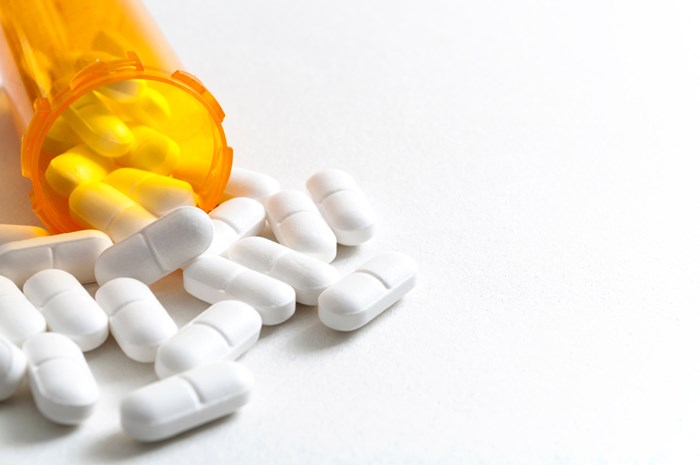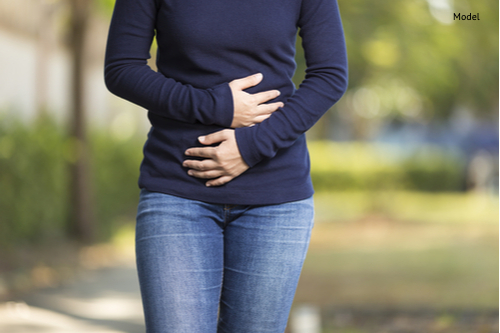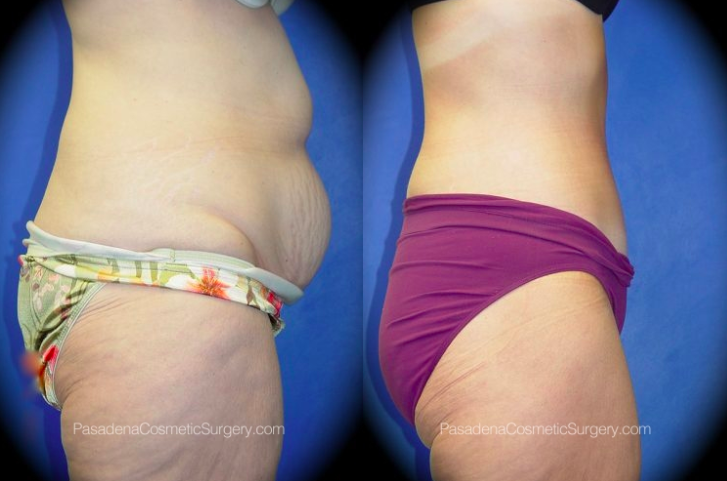Abdominoplasty, also known as a tummy tuck, is a cosmetic surgical procedure that flattens the abdomen by removing excess fat and skin and tightening the underlying muscle. Most people recover within several weeks. You may experience swelling and moderate pain during your post-operative recovery, both due to the procedure itself and because of movements you make while your incision is healing. You can get through this period more comfortably by trying several strategies for managing the pain after a tummy tuck.
In this post, we’ll also consider warning signs after tummy tuck and how long does tummy tuck pain last.
Pain Medication After Tummy Tuck

There will always be some element of discomfort after a surgical procedure no matter if it is for therapeutic or cosmetic reasons. Opioid medications have been available for a while and are useful in the management of postoperative pain, including Percocet, Vicodin, Norco, and Tylenol with Codeine.
Beginning in the mid-1990s, the healthcare industry started calling pain the “fifth vital sign” and opioid prescribing began rapidly increasing. As of 2019, the United States consumes around 2/3 of all opioid drugs worldwide. This is known as the “opioid crisis.” Surgeons collectively write around 10% of the annual opioid prescriptions.
As the public gets better educated and the effects of long-term opioid abuse are shown on the news, the tide has shifted toward more responsible use and prescribing of these powerful medications.
Are there options to avoid using opioids after plastic surgery?
Every individual will have a different pain threshold and response to surgery. It is important for the recovery process that pain is adequately addressed and managed. Nevertheless, there are some crucial actions that can be taken to reduce the danger of excessive postoperative opioid medication prescribing.
Many plastic surgeons prescribe far fewer pills than in the past. For example, this may be only prescribing ten Vicodin tablets for breast augmentation patients instead of 30 or 60 as had been common practice in the past. It is helpful to pre-medicate patients with a long-acting non-opioid pain reliever the day before surgery and then continue this for 7-10 days. For many breast and body surgery patients, longer-acting local anesthetics such as Bupivacaine or Exparel, have significant benefits in alleviating the immediate postoperative pain and reducing the quantity of opioid medications consumed.
How likely is it that I’ll develop an opiate addiction after surgery?
With proper prescribing, no history of prior substance abuse, and a defined reason for needing the medication, most patients are at a very low risk of becoming chronic opioid users. Communication with your surgical team is critical and sharing things like a family history of alcohol or drug abuse can help your doctor make the best prescribing decisions for your postoperative care.
Other risk factors for opioid abuse are male gender, history of sexual abuse and being in the age demographic of 15-45 years. If you have concerns about opioid addiction or the potential for misuse, please let your surgeon know.
Why use long-acting local anesthetics?
Bupivacaine is a long-acting local anesthetic that can provide outstanding pain relief in the first 6-8 hours after a surgical procedure. Exparel is a longer-acting form of Bupivacaine that can last up to three days. Traditional Bupivacaine is usually covered by insurance and is included in cash-pay cosmetic quotes. Exparel is a newer medication and is not covered by many insurance plans and will often incur an additional charge for cosmetic cases. The goal in using long-acting local anesthetics is to decrease postoperative discomfort, reduce emergency room visits for pain control and ultimately decrease the amount of opioid pain medication required in the postoperative period.
Additionally, by reducing the number of opioids taken in the early recovery period, the Bupivacaine-based local anesthetics can help lessen some of the unpleasant side effect of opioid medications such as constipation, urinary retention and nausea. By combining the use of long-acting Bupivacaine-based local anesthetics in breast and body surgery with preoperative non-narcotic pain medications and muscle relaxants, current postoperative protocols have been able to significantly decrease the amount of narcotic pain medication that patients use after surgery.
What do I do if I am really in pain?
If you are having significant uncontrolled pain after surgery, please let your surgery team know. There are several early complications, such as hematomas from blood collections, that cause pain out of proportion to the nature of the procedure and it is important to be in touch with your surgery team to make arrangements to be evaluated. Taking opioids after surgery has a place in the recovery process but their use does need to be done with forethought and judicious prescribing.
How do I talk to my surgeon about medications during recovery?
Patients are instructed on the medications they will take following surgery as part of the preoperative process, and each medication’s function in the healing process is made very apparent. Patients typically feel the most discomfort in the first one to two days following surgery, so if necessary, this is a good time to utilize opioids. As other medications like Valium, Celebrex, Meloxicam, Ibuprofen, and Acetaminophen are primarily used to handle the discomfort of healing after surgery, the opioids should be tapered and then stopped after this period.
ASPS member surgeons are dedicated to being part of the solution when it comes to the opioid epidemic and are happy to speak with you to develop the best and safest recovery plan that is suited to your individual needs.
Pain Pump After Tummy Tuck
Plastic surgery can often seem like a daunting endeavor, but the recovery process doesn’t have to be as scary as it sounds. At Koger Cosmetic Clinic and Medspa, we offer a pain pump to help in the recovery of select plastic surgery procedures. This allows our patients to be as comfortable as possible throughout their recovery without having to rely on narcotics alone. Here’s everything you need to know about this ground-breaking technology.
What is a Pain Pump?
A pain pump is a small, disposable pain relief device filled with a local anesthetic used to relieve pain to a specific area after surgery. The pain pump continuously delivers the medication, which blocks the pain directly in the area of your procedure. At Koger Cosmetic Clinic & Medspa, we use pain pumps for tummy tuck or breast augmentation procedures.
Why Use a Pain Pump?
Narcotics like morphine or codeine are the most typical treatments for pain following surgery. These medications may cause constipation, nausea, and sleepiness or drowsiness as side effects. Local anesthetics are drugs that numb a specified spot, unlike narcotics. There is less chance of these unpleasant side effects occurring because they don’t affect the complete body. The pain pump also provides a consistent distribution of the numbing agent, so there are no lapses in your comfort. Patients experience different levels of pain. For this reason, we still provide prescriptions for traditional pain medications, however you will find that you need far less or none at all in conjunction with a pain pump.
How Does a Pain Pump Work?
The pain pump is connected to a small catheter (hollow wire), which is inserted directly to the surgical area during surgery by Dr. Koger. The catheters are connected to a small pump that is filled with lidocaine, a commonly used anesthetic used in other surgeries and dental procedures. The pain pump is then programmed to deliver the appropriate amount of medication specifically for you.
How Long Does a Pain Pump Last?
The pain pumps for breast augmentation and tummy tucks are filled with about four days worth of medication. The pain pump will distribute that numbing medication evenly over the course of the first four days of your recovery to ensure that you are as comfortable as possible. There won’t be any need to remember to dispense the medication or worry about getting too much. The pain pump does all the work for you so you can focus on getting better.
The pain pump has become an increasingly popular way to give patients a more comfortable recovery from their cosmetic procedure. If you are interested in learning more about how the pain pump can make your recovery process easier.
Pain Management After Tummy Tuck
Tummy tuck surgery cuts through multiple layers of skin and fat and includes muscle tightening to restore a slimmer and more defined abdominal contour. Therefore, it should not surprise you that the recovery for tummy tuck surgery will be painful at times.

You cannot eliminate all discomfort; however, there are ways to care for yourself so that pain is not only managed but minimized.
NON-PRESCRIPTION MEDICATIONS
Dr. O’Toole will provide you with a prescription for pain medication; however, it is up to you to decide whether or not you want to fill it. It is not required to take prescription pain medication, as they can contribute to additional risks if not appropriately taken. However, they can be a beneficial and comfort-enhancing tool.
Patients who decide against prescription medication will likely still want to have something that will help alleviate discomfort. As opposed to aspirin, ibuprofen, and other NSAIDs (non-steroidal anti-inflammatory medicines), TYLENOL®, whether standard or extra-strength, is the best over-the-counter pain reliever option. However, TYLENOL® must still be used with caution, and you must be careful not to take more than the advised daily dosage.
Dr. O’Toole also uses the ON-Q* Pain Relief System routinely. This non-narcotic pain management system delivers marcaine, a local anesthetic, to the areas that need it after a surgical procedure. The on-demand system uses a small catheter to infuse the treatment site with the medication, allowing patients to be able to start moving around after surgery earlier, significantly reducing post-op pain, and minimizing certain risks that are associated with narcotic pain medications. The ON-Q* pump can provide pain relief for three to five days depending on the patient’s needs.
INCREASE YOUR CIRCULATION
Although recovery from a tummy tuck requires rest, this does not mean you can or should spend the entire day in bed. As soon as you can, you need to stand up and start moving around. Blood circulation in your body can be improved by doing modest, stress-free stretches and taking leisurely walks about your home. This can lessen your chance of blood clots, which can be serious or even fatal, and inflammation.
THE “LAUGHING” PROBLEM
Anyone who has ever had an abdominal operation, such as a C-section, will be aware of the discomfort that laughing, coughing, and sneezing will cause. Most women aren’t aware of how frequently they laugh, cough, or sneeze until they have to face the discomfort directly. Your abdomen will feel the strain from these activities, so limit them as much as possible.
Grab the closest pillow or blanket and tightly hold it over your incision if you feel like you are about to cough, sneeze, or laugh. This will lessen some of the pressure. If a pillow or blanket are not available, use both hands to push as hard as you can on the affected area. The soreness won’t go away entirely as a result of this action, but it will become more tolerable.

A BALANCED DIET
Eating a protein and nutrient-enriched diet following your tummy tuck will do wonders for repairing tissue, reducing inflammation, and helping your body heal. Nutrient-packed foods like lean meats, yogurt, fruits, and vegetables will keep you full, stimulate cell production, and allow you to feel more comfortable. In addition to your diet, be sure that you are staying hydrated; water and herbal teas are wonderful options.
Warning Signs After Tummy Tuck
Pain, bruising, swelling, and digestive problems are normal and inevitable consequences of the tummy tuck. However, you should be aware of some warning signs after a tummy tuck, such as:
- High fever because it shows infection;
- Severe pain in the operated area;
- Pus or green fluid discharging from the incisions;
- Excessive bleeding in the incision site;
- Shortness of breath; and
- It prolonged bruising and numbness in and around the operated area.
How Long Does Tummy Tuck Pain Last
If you’re considering getting a belly tuck, be ready for a one- to two-month recovery period, during which you can endure pain. Generally speaking, post-tummy tuck pain is modest to severe. In rare cases, discomfort or aberrant sensory perception might last for weeks, months, or even years after the treatment. You should let your doctor know if your discomfort is severe or persistent.
